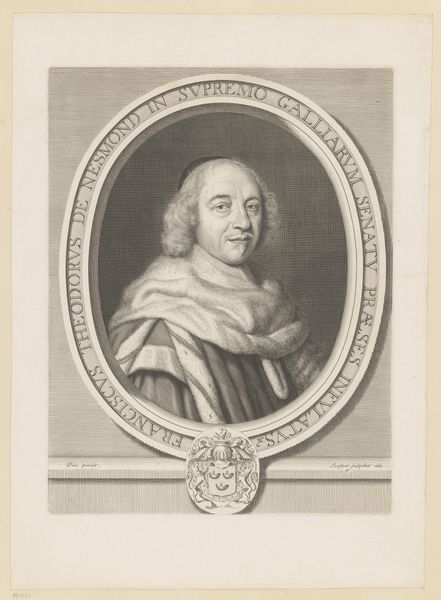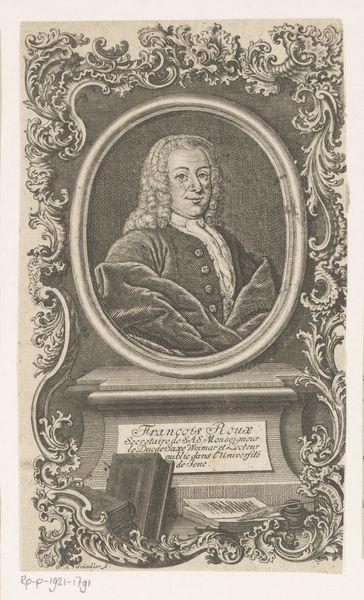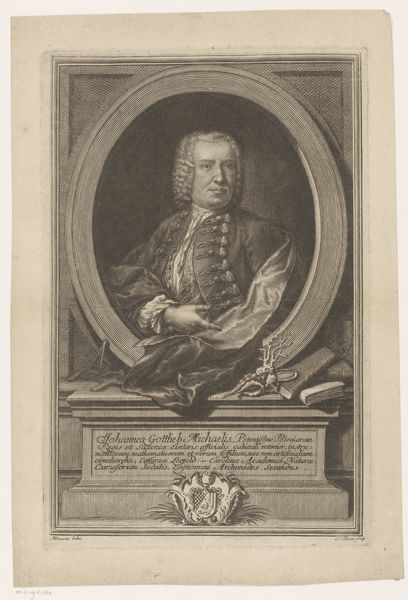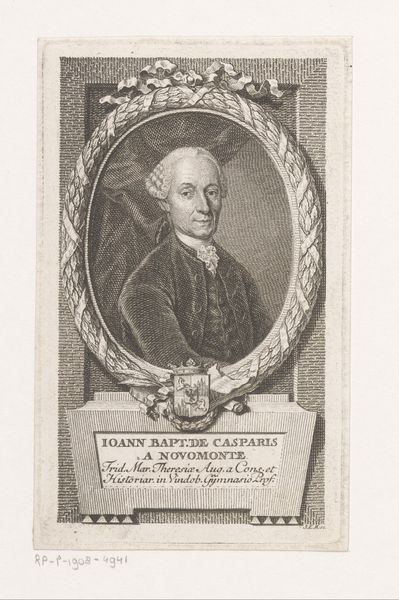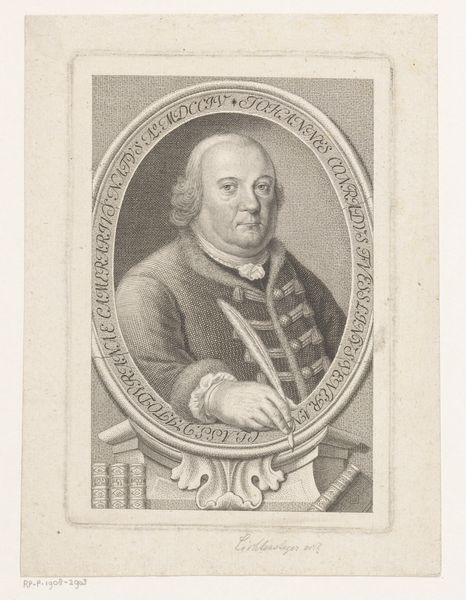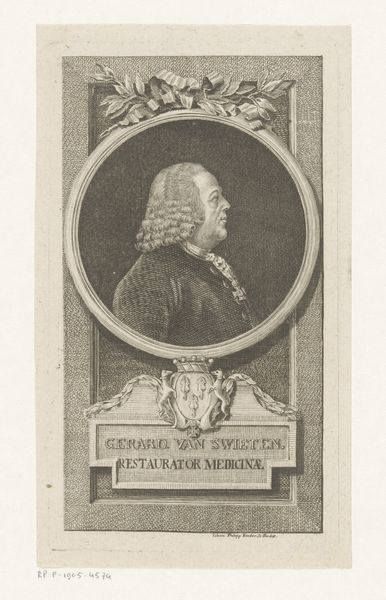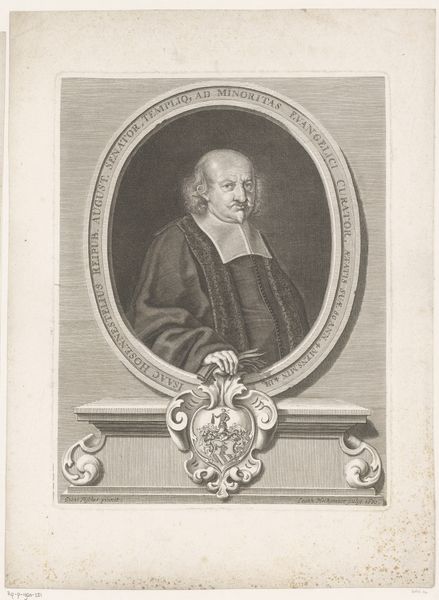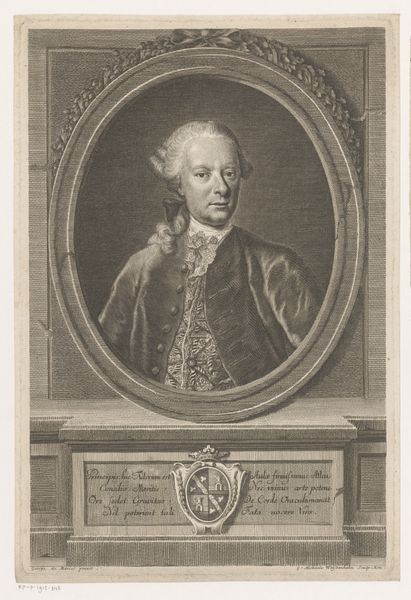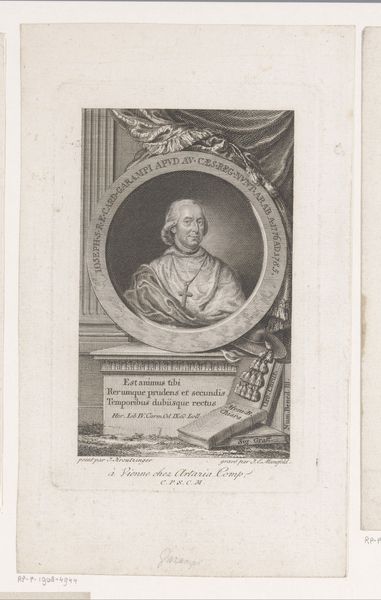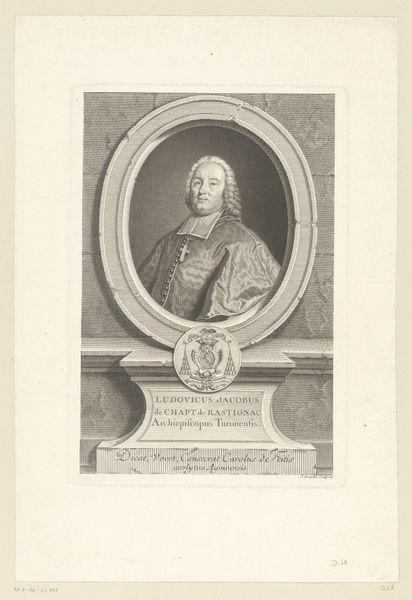
Dimensions: height 316 mm, width 212 mm
Copyright: Rijks Museum: Open Domain
Editor: Here we have a print from between 1748 and 1796 by Camillo Tinti, entitled "Portrait of Pope Pius VI," rendered with engraving on paper. The intricate line work creates a somewhat somber but also dignified mood. What do you see in this piece from a formalist perspective? Curator: The engraving technique itself commands attention. Notice the incredible control Tinti wields over the burin, varying the pressure to create tonal shifts. Light and shadow are carefully modeled, delineating form, especially in the face and papal vestments. The oval frame, adorned with vegetal motifs, functions as more than a border; it's an integral compositional element that focuses the viewer's gaze. How does the textual inscription at the bottom impact the overall composition in your opinion? Editor: I think the inscription grounds the portrait, providing context but also balancing the ornate frame above. The crisp lettering provides a nice contrast to the textured rendering of the portrait. Curator: Precisely. The artist clearly understood the delicate balance between representation and ornamentation. This composition could be interpreted as the convergence of textural variation—look at the varied use of hatching techniques—with the conceptual rigor of geometric forms, which create visual order from a chaotic era. Do you feel that the artist could've altered the medium for the engraving to imbue it with another meaning? Editor: That's a good point, using something other than paper perhaps. Considering how fragile paper is, and given how engravings must be able to capture every single last detail, I'm guessing not much else would work as well as the original. This piece really makes me appreciate the formal aspects of engravings. I've usually considered these just a mechanical way to reproduce an image. Curator: Indeed, but it reveals an awareness that artistry and mechanical skill may be equally symbiotic. It showcases how close visual examination yields insight into how even what we assume is mere reproduction could possess significant structural ingenuity.
Comments
No comments
Be the first to comment and join the conversation on the ultimate creative platform.
